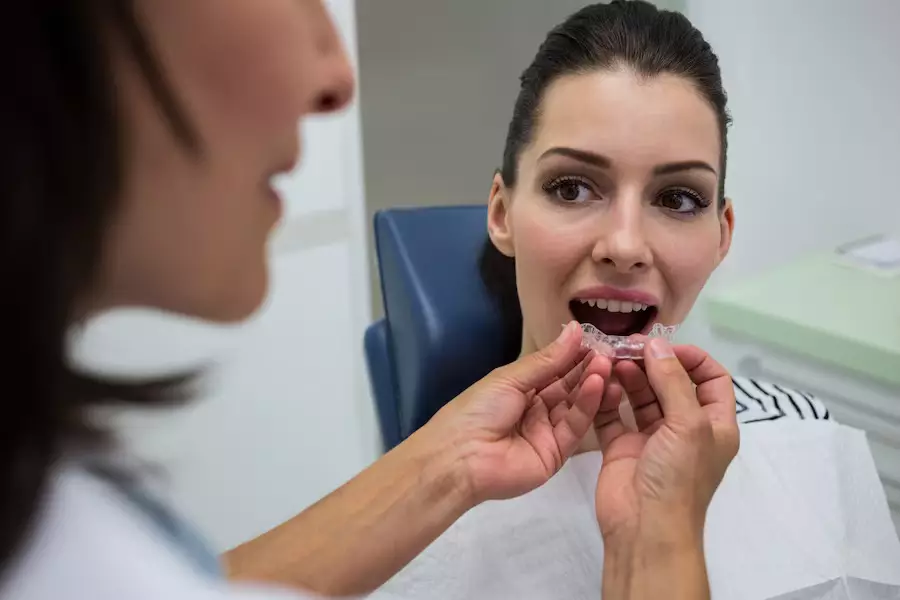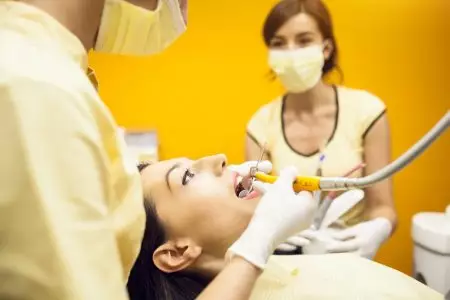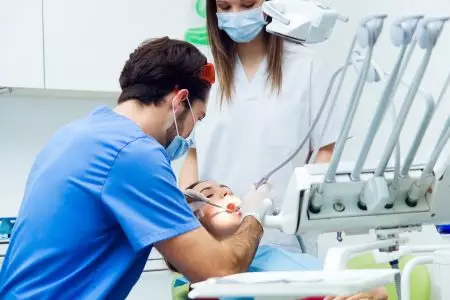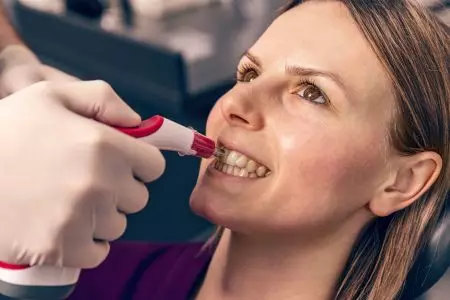Dental splinting is a procedure that aims to strengthen moving teeth. It is an effective and safe method that will help restore the smile and functionality of the teeth. Splinting is done in case of periodontitis or mechanical damage to the teeth. What is this procedure and what are its peculiarities, let’s understand.
Dental splinting in Odessa
Dental splinting in Odessa is a common procedure. Do not know who to trust? Contact the clinic of family dentistry “Dent-House”. Experienced dentists will do their best to solve your problem in the shortest possible time. The cost of the procedure depends on various factors – the type of splinting and individual characteristics of the patient.
What is dental splinting?
Dental splinting is a dental treatment procedure that uses a dental splint or special products such as glass fibre. A dental splint is a custom-made device that is placed over the teeth and fixed in place to prevent them from moving or to protect them from further damage.
Indications for splinting
Tooth splinting can be performed for a variety of reasons. Most commonly, the procedure is performed for periodontitis, a condition that leads to loosening and loss of teeth. However, splinting can also be used in these cases:
- Restoration of damaged teeth. If a tooth is cracked, fractured, or missing a part, splinting can be used to restore its structure and protect it from further decay.
- Stabilisation before other dental procedures. Splinting may be necessary before restorative work, such as crowns or bridges, to prevent teeth from shifting or changing position.
- Correction of misaligned teeth. Splinting can be used to temporarily stabilise teeth during orthodontic treatment or prior to orthodontic correction such as wearing braces or clear removable appliances.
- Prevention of tooth shifting after the extraction of a neighbouring tooth. After the procedure, neighbouring teeth may begin to shift, which can lead to unwanted changes in occlusion (teeth coming together). The procedure can help prevent this misalignment and maintain proper tooth alignment.
Dental splinting in Odessa is also used in the treatment of periodontal disease, jaw fracture. The procedure helps to eliminate loosening of teeth, improves the process of eating, stops the destruction of bone tissue and improves the appearance of a person.
Types of dental splinting
There are several types of the procedure:
- Using glass fibre. This is a flexible and strong material that allows you to create thin but strong splints that securely fix damaged or weakened teeth. The design is fitted not only to the loosened teeth, but also to neighbouring teeth. Such splints are aesthetic, practical and durable, and do not irritate the patient’s mucosa.
- With the help of a bracket denture. This is a removable dental structure consisting of a metal frame that covers some or all of the teeth, and plastic dental locks that restore missing teeth. A denture is a strong and secure structure that provides stability for the teeth. It also allows you to restore one or more missing teeth, filling gaps in the tooth row. This is important for restoring bite function, improving speech, and preventing the remaining teeth from shifting. Also, because the brace is removable, it is easy to care for.
- With crowns. This is an effective method of restoring and protecting damaged teeth. A crown is a custom-made dental prosthesis that completely covers the surface of a tooth, from its root part to the visible part called the crown. It is a very effective method of splinting because the crown completely covers the tooth and restores its function. Splinting with crowns is durable and aesthetically pleasing, but the cost is quite high.
Modern splinting uses quality materials that do not harm enamel, do not cause discomfort and do not traumatise the oral mucosa.
Splinting can also be temporary – if the tooth is loose due to mechanical damage or inflammation. The splint is placed for a period of 3 months, during which time you can stabilise the situation or prepare for surgical treatment. Long-term splints are placed for up to 1 year. Permanent splints are placed if there is a possibility of further loosening of the teeth. They should be replaced every 3-5 years.
Specifics of the splinting process
The process of splinting teeth in Odessa is an important and carefully planned medical procedure that is performed by an orthopedic dentist. Here are some features of the process:
- Consultation and planning. The doctor will perform an examination and may perform x-rays or diagnostic tests to better determine the condition of your teeth and choose the appropriate splinting method.
- Selecting the appropriate method, taking into account the condition of the teeth and the desired results.
- Tooth preparation. This may include removing damaged or diseased tissue, shaping the tooth to better fit the splint, and making an impression of the tooth to make a custom splint or crown.
- Fabrication of a splint. It is usually necessary to take impressions of your teeth and send them to a dental laboratory for the fabrication of a splint or crown.
- Fitting and Adjustment. The doctor will gently check and adjust the fit of the splint to ensure comfort and proper positioning of the teeth.
You should also visit your dentist regularly after the procedure.
Dental care after splinting procedure
To ensure that the splinting lasts as long as possible and does not cause damage, the teeth must be carefully cared for. Here are some recommendations:
- Regular brushing.
- Use of interdental brushes or floss.
- Avoid chewing hard or sticky foods.
- Have your teeth professionally cleaned once a year.
- Follow your doctor’s recommendations.
Splinting will help to save your teeth and preserve the beauty of your smile. To make the procedure as effective as possible, contact the dentists at Dent House Clinic in Odessa. We also offer other services such as gingivitis treatment, implants, whitening and other dental procedures. To find out how much a procedure costs or to book an appointment, you can visit our website or call us.
Frequently asked questions about dental splinting
🦷 What is dental splinting and when is it necessary?
😁 How is the dental splinting procedure performed?
🦷 What results can I expect after splinting?
Cost of services
-
Treatment of superficial caries from 1100 UAH
-
Treatment of medium caries from 1500 UAH
-
Treatment of deep caries from 1800 UAH
-
Aesthetic restoration of frontal tooth 1 wall from 5000-6000 UAH
-
Aesthetic restoration of frontal tooth 2 walls from 5000-6000 UAH
-
Aesthetic restoration of chewing tooth 1 wall from 4000 - 5000 UAH
-
Aesthetic restoration of chewing tooth 2 walls from 4000 - 5000 UAH
-
Use of microscope in treatment 2000 UAH
-
Reception on acute pain from 1300 UAH
-
Treatment of canals (1-canal tooth) from 2300 UAH
-
Treatment of canals (2-channel) from 2800 UAH
-
Treatment of canals (3-channel) from 3600 UAH
-
Treatment of canals (4-channel) from 4500 UAH
-
Treatment of canals under the microscope (1-channel tooth) from 3800 UAH
-
Treatment of canals under the microscope (2-channel) from 5300 UAH
-
Treatment of canals under the microscope (3-channel) from 6600 UAH
-
Treatment of canals under microscope (4-channel) from 7500 UAH
Specialists

Molochny Andrey Sergeyevich
Dentist-orthodontist





